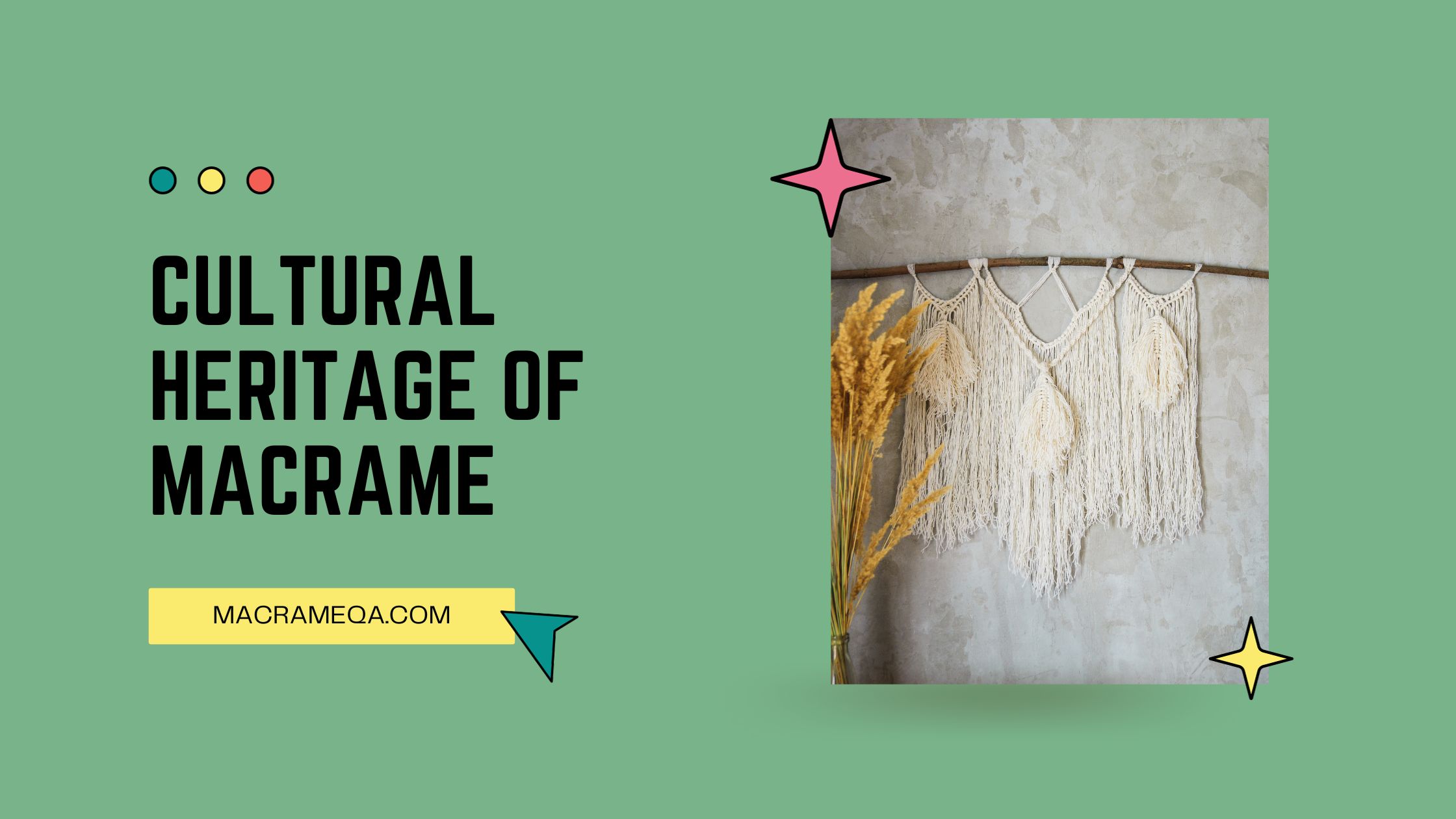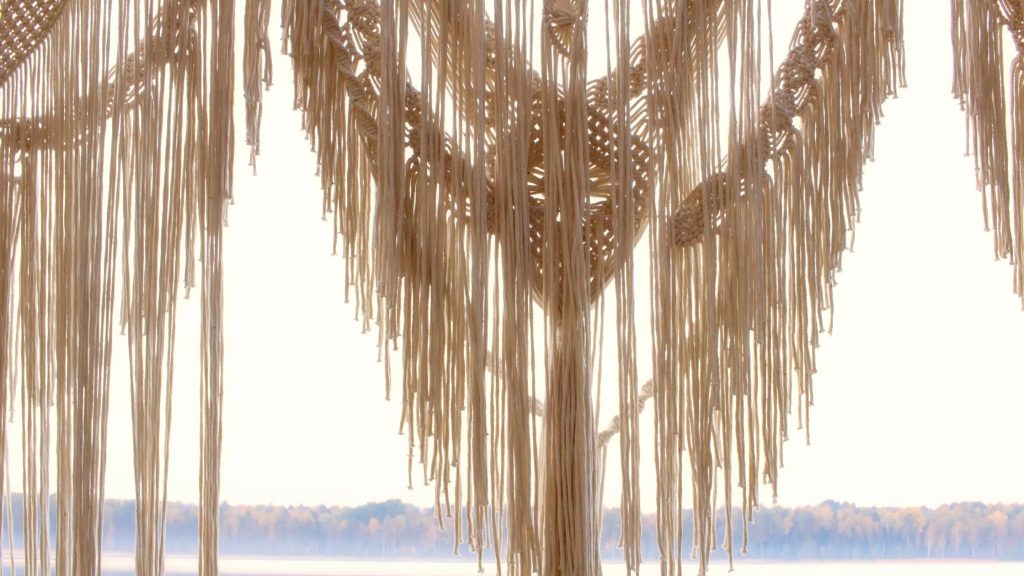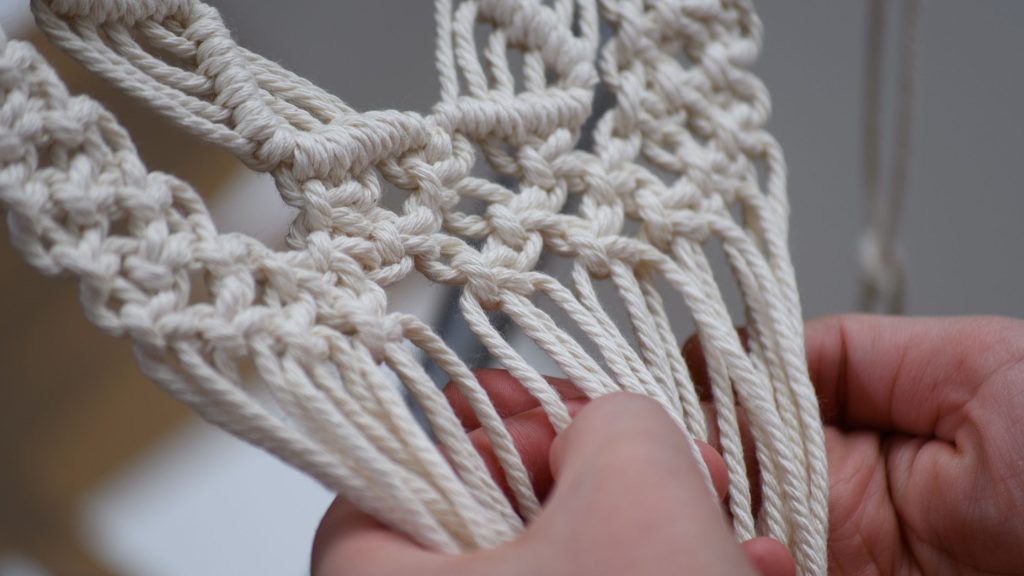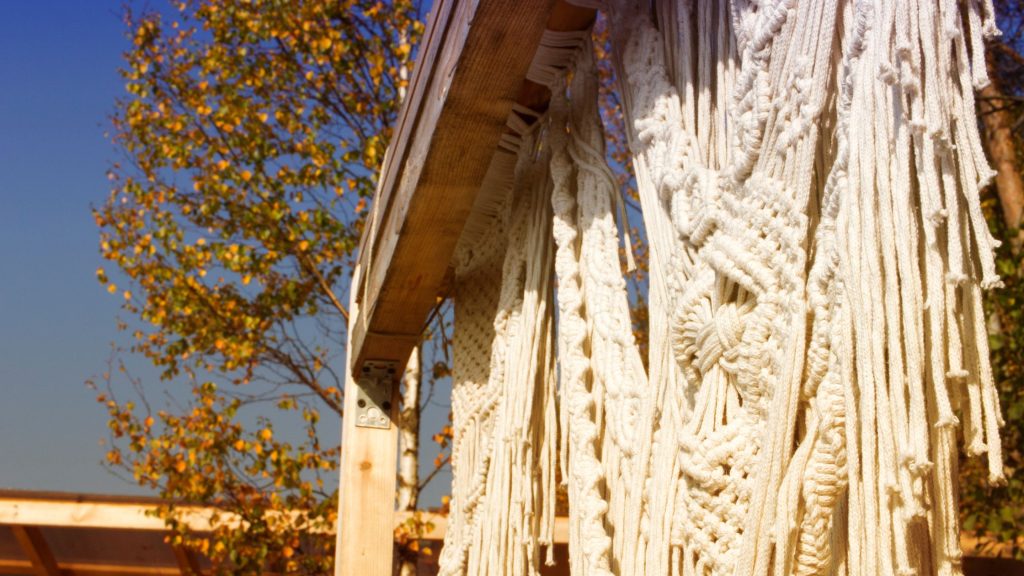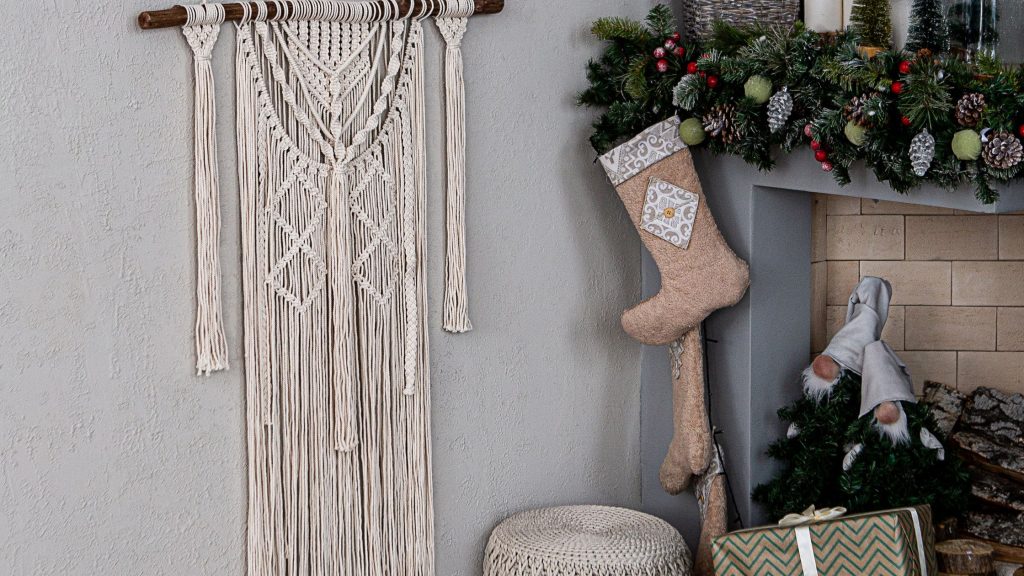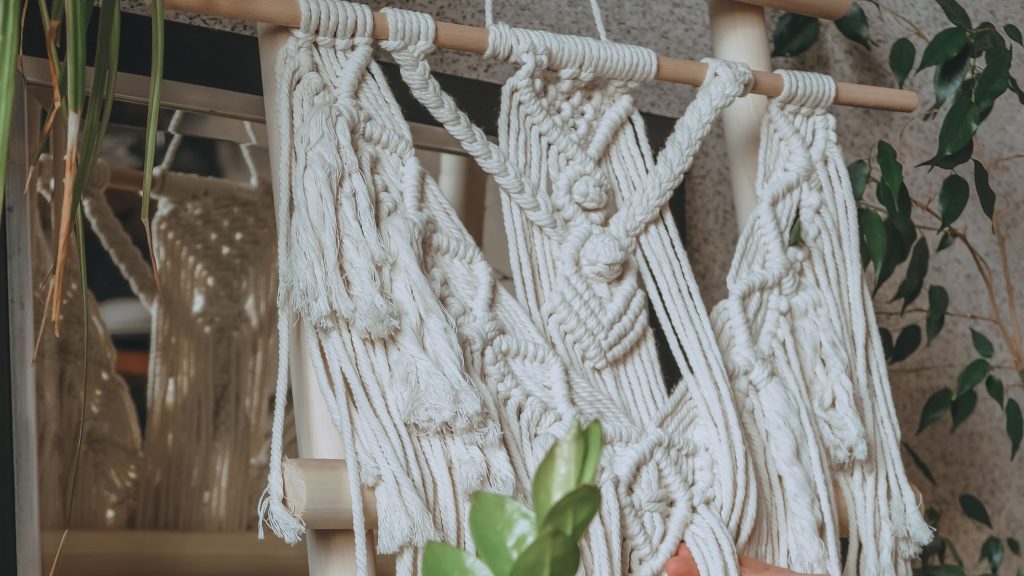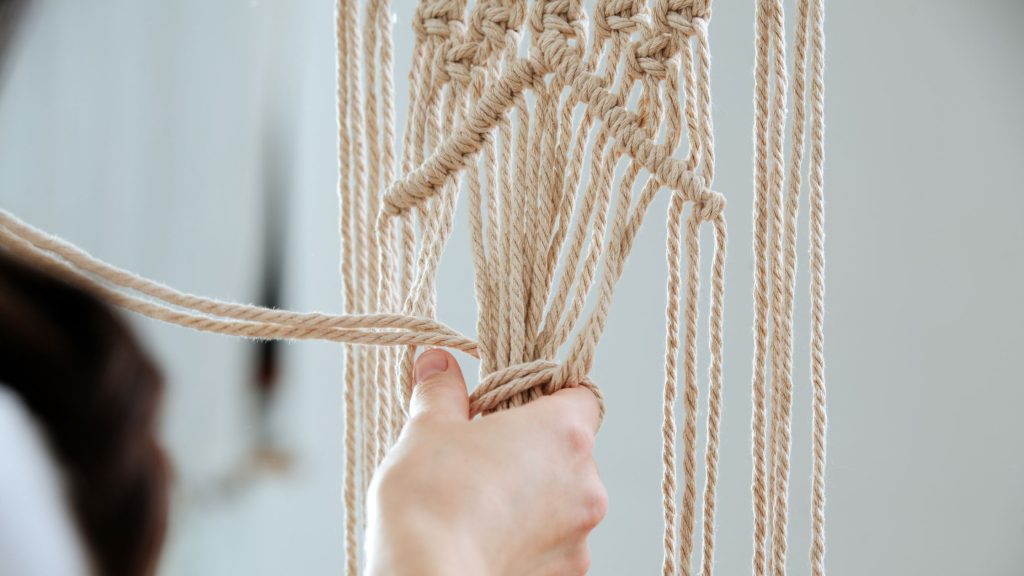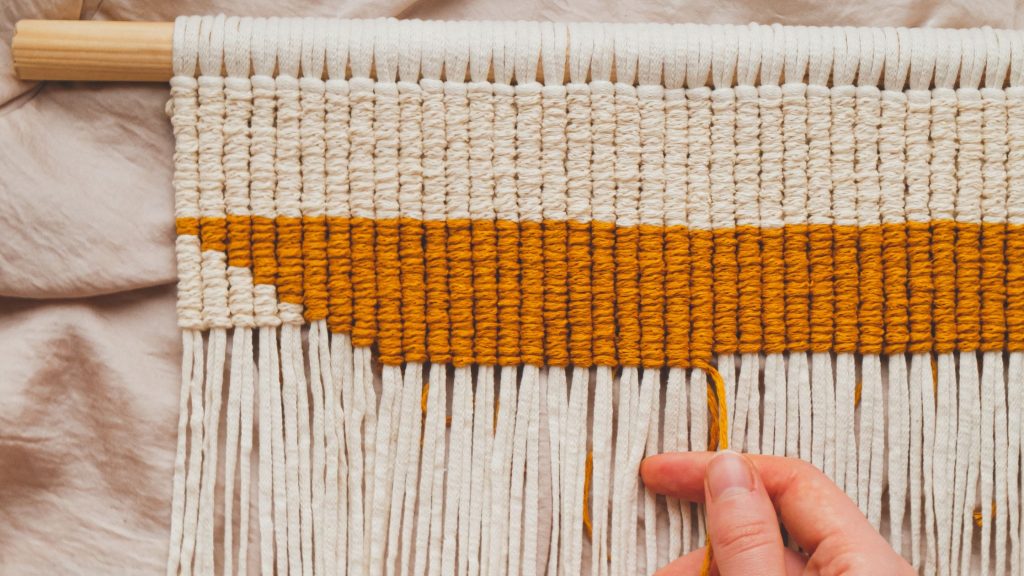Macrame, a traditional craft form that uses delicate knotting techniques to create intricate patterns, holds a rich cultural heritage in specific regions around the world. From the ornate wall hangings of the Middle East to the intricate jewelry of South America and the intricate tapestries of Asia, each region has its unique style and significance when it comes to macrame. Throughout history, macrame has been deeply intertwined with the cultural traditions, storytelling, and spirituality of various communities across the globe. Exploring the cultural heritage of macrame in these specific regions unveils a fascinating tapestry of artistry, symbolism, and cultural identity that continues to be celebrated and cherished to this day.
Macrame in the Middle East
Macrame, the art of knotting cords or threads to create decorative patterns, has a rich cultural heritage in the Middle East. The history of macrame in this region dates back centuries, with its origins rooted in ancient Mesopotamia. The people of the Middle East have long used macrame techniques to create intricate designs in various forms, including garments, textiles, and decorative pieces.
History of macrame in the Middle East
The history of macrame in the Middle East can be traced back to the 13th century when it flourished during the Islamic Golden Age. This art form was widely practiced and cherished for its intricate patterns and craftsmanship. Macrame was used to create beautiful garments, decorative hangings, and even jewelry. The intricate knotting techniques used in Middle Eastern macrame are a testament to the skill and creativity of the artisans of that time.
Traditional macrame techniques in the Middle East
Traditional macrame techniques in the Middle East involve the use of various knotting methods, including the square knot, spiral knot, and half-hitch knot. These techniques are combined to create intricate geometric patterns and motifs. One of the most well-known knotting techniques is the Turkish knot, which is commonly used in Middle Eastern macrame. The use of natural materials, such as cotton and silk threads, is also a characteristic feature of traditional Middle Eastern macrame.
Symbolism and meanings in Middle Eastern macrame
In Middle Eastern macrame, the patterns and motifs used often carry symbolic meanings. For example, the use of the evil eye motif is believed to protect against negative energy and ward off evil spirits. Other common motifs include geometric shapes, flowers, and animals, each representing different aspects of Middle Eastern culture and beliefs. The use of specific colors, such as blue for protection and red for passion, further adds to the symbolism and meaning embedded in Middle Eastern macrame.
Macrame in Europe
Macrame has a prominent place in European history, particularly during the Victorian era. The distinct styles of macrame developed during this time continue to inspire contemporary European macrame artists. Today, macrame is experiencing a revival in popularity in Europe, with artists incorporating modern design elements into their creations.
Macrame in the Victorian era
During the Victorian era, macrame gained widespread popularity as a decorative art form. It was used to embellish clothing, furniture, and home accessories. The intricate knotting techniques and delicate patterns were highly valued as a sign of elegance and refinement. Macrame was particularly popular among the upper-class women who had the time and resources to engage in this intricate craft.
Distinctive styles of macrame in Europe
Europe boasts several distinctive styles of macrame, each influenced by different cultures and periods. For example, Irish macrame is characterized by its intricate lace-like designs, while Spanish macrame is known for its use of bright colors and bold patterns. Scandinavian macrame, on the other hand, emphasizes simplicity and uses natural materials such as linen and hemp.
Macrame revival in contemporary Europe
In recent years, macrame has experienced a revival in Europe, with many contemporary artists incorporating this traditional craft into their modern designs. From wall hangings and plant hangers to jewelry and clothing, macrame has found a place in contemporary European art and fashion. The versatility of macrame allows artists to experiment with various materials, colors, and techniques, resulting in unique and innovative creations.
Macrame in Asia
Asia has a rich history of macrame, with ancient China being one of its earliest practitioners. The influence of Buddhism and Taoism on Asian macrame is evident in the spiritual motifs and symbolism used. Asian macrame also features intricate knotting techniques and a wide range of common motifs that reflect the cultural heritage of the region.
Macrame in ancient China
Macrame has a long-standing history in China, dating back to ancient times. The Chinese used macrame techniques to create decorative items, garments, and accessories adorned with intricate knotting patterns. This art form was highly regarded and often associated with wealth and prosperity. Macrame was passed down through generations, preserving the techniques and traditions of ancient Chinese macrame.
Influence of Buddhism and Taoism on Asian macrame
Buddhism and Taoism played a significant role in shaping Asian macrame, particularly in countries like Japan and Thailand. Buddhist and Taoist symbols, such as the lotus flower and the yin and yang symbol, are often incorporated into macrame designs, representing spiritual harmony and balance. These symbols add depth and meaning to the art form, making it not just visually appealing but spiritually significant as well.
Common motifs in Asian macrame
Asian macrame is characterized by a wide range of motifs, each carrying symbolic meaning and cultural significance. Dragon motifs, for example, represent power and strength, while the peony flower symbolizes wealth and good fortune. The use of these motifs in macrame pieces not only adds beauty but also serves as a reflection of the cultural heritage and beliefs of the Asian region.
Macrame in the Americas
The Americas have a diverse cultural heritage when it comes to macrame. From Native American cultures to Central and South America, macrame has played an integral role in their traditional practices and artistic expressions. The incorporation of natural materials further enhances the connection between macrame and the natural world, which is central to many indigenous cultures in the Americas.
Macrame in Native American cultures
Macrame has been an integral part of Native American culture for centuries. Various tribes, such as the Navajo and Apache, have used macrame techniques to create decorative items, clothing, and ceremonial pieces. Macrame was not only a means of artistic expression but also served as a form of communication, with different knots and patterns conveying specific messages and stories.
Macrame in Central and South America
In Central and South America, macrame has been deeply rooted in indigenous cultures for generations. The use of natural materials, such as hemp, cactus fibers, and feathers, is prevalent in the macrame creations of these regions. Macrame was not only a utilitarian craft but also a form of artistic expression, with vibrant colors and intricate patterns representing the unique cultural heritage and traditions of Central and South America.
Incorporation of natural materials in American macrame
One of the distinguishing features of macrame in the Americas is the incorporation of natural materials. In Native American cultures, feathers, beads, and shells were often incorporated into macrame designs to represent various spiritual and cultural beliefs. In Central and South America, natural fibers like hemp and jute were commonly used, highlighting the connection between macrame and the surrounding natural environment.
Macrame in Africa
Africa has a rich history of macrame, with its roots deeply embedded in the tribal communities of the continent. Macrame played a significant role in African rituals and ceremonies, and traditional patterns and techniques are still preserved and practiced by many communities today.
Macrame in African tribal communities
Macrame has been an integral part of African tribal communities for centuries. It served as a means of artistic expression and communication, with different knotting patterns conveying specific meanings and messages. Macrame was used to create ceremonial garments, jewelry, and decorative items that held spiritual significance within the community.
Role of macrame in African rituals and ceremonies
Macrame played a vital role in African rituals and ceremonies, symbolizing the cultural beliefs and spiritual practices of the communities. For example, in certain tribes, macrame was used to create sacred masks or ceremonial attire worn during specific rituals. The intricate knotting techniques and symbolic patterns in these macrame pieces added to the spiritual significance and transformative power of the ceremonies.
Traditional macrame patterns in Africa
African macrame patterns are characterized by their bold designs, vibrant colors, and geometric shapes. Each pattern has a unique meaning and cultural significance, often representing themes such as fertility, protection, and ancestral connections. The use of natural materials, such as plant fibers and natural dyes, further adds to the authenticity and traditional nature of African macrame.
Macrame in Oceania
Oceania, encompassing the islands of Polynesia, Melanesia, and Micronesia, has a deep-rooted connection to macrame. Macrame has been an integral part of Polynesian culture, with unique techniques and styles developed over generations. It has also played a crucial role in storytelling and communication within the Oceania region.
Macrame is an integral part of Polynesian culture
In Polynesian culture, macrame is considered an art form that is deeply interwoven with everyday life. The people of Polynesia have developed their distinct macrame techniques, which are characterized by the use of natural fibers and intricate knotting patterns. Macrame is often used to create various traditional items, such as clothing, wall hangings, and ceremonial pieces, reflecting the rich cultural heritage and traditions of Polynesia.
Unique macrame techniques in New Zealand
New Zealand, known for its Maori culture, has its unique macrame techniques and styles. Feather macrame, known as “whakawhetai,” is a traditional craft that uses feathers from native birds, such as the kiwi or the kereru, to create intricate and meaningful designs. This technique is not only visually stunning but also serves as a way to honor the natural world and connect with the spiritual realm.
Macrame’s role in storytelling in Oceania
In Oceania, macrame has a deep connection to storytelling and communication. Many traditional macrame pieces in this region are infused with ancient myths and legends, with the knotting patterns representing stories of creation, ancestral lineage, or local legends. These macrame pieces serve as tangible forms of storytelling, preserving cultural narratives and passing them down to future generations.
Macrame in the Caribbean
The Caribbean region has a unique blend of African and European influences, which is reflected in its macrame traditions. Macrame in the Caribbean is often a fusion of these two cultures, resulting in vibrant and eclectic designs. Additionally, macrame has served as a means of income for many individuals in the Caribbean, providing economic opportunities and supporting local communities.
Influence of African and European cultures on Caribbean macrame
The Caribbean’s macrame traditions are influenced by the African and European cultures that have shaped the region’s history. The African influence is evident in the use of natural materials, such as palm fibers or coconut husks, and the incorporation of African knotting techniques. European influences, on the other hand, can be seen in the use of lace-like patterns and decorative elements reminiscent of the Victorian era.
Macrame in Caribbean textiles and clothing
In the Caribbean, macrame is often utilized in textiles and clothing. Traditional Caribbean garments, such as dresses and headwraps, are adorned with macrame trims and embellishments, adding a unique touch to the vibrant and colorful fabrics. Macrame also finds its way into home textiles, including curtains, tablecloths, and bedspreads, showcasing the fusion of African and European aesthetics.
Macrame as a means of income in the Caribbean
In many Caribbean communities, macrame has provided a means of income and economic empowerment. Local artisans create macrame pieces, such as jewelry, handbags, and home decor, using traditional techniques and materials. These pieces are then sold locally and internationally, supporting the local economy and preserving the rich macrame traditions of the Caribbean.
Macrame in the Indian Subcontinent
The Indian Subcontinent has a long-standing history of macrame, deeply rooted in its diverse cultures and traditions. Macrame has played a significant role in various religious and cultural practices, with unique techniques and patterns reflecting the rich heritage of the region.
Historical significance of macrame in India
Macrame has a historical significance in India, with references to this art form dating back to ancient times. In India, macrame techniques were employed in various religious practices, including the creation of sacred thread bracelets and decorative hangings for Hindu temples. Macrame also found its way into textiles and clothing, adding intricate patterns and textures to traditional Indian garments.
Traditional macrame techniques in Pakistan and Bangladesh
In Pakistan and Bangladesh, macrame is deeply ingrained in the cultural traditions of the region. Traditional macrame techniques passed down through generations, are used to create decorative pieces, such as wall hangings, plant hangers, and intricate knotwork mandalas. The use of vibrant colors and patterns reflects the rich and diverse cultural heritage of Pakistan and Bangladesh.
Sacred macrame art in Nepal
Nepal has a unique macrame tradition that is closely tied to religious and spiritual practices. Sacred macrame art, known as “Bhairava Macrame,” is used to create intricate mandalas, statues, and prayer flags. These macrame pieces serve as divine offerings and are believed to carry blessings and spiritual protection. The delicate knotting techniques and attention to detail in Nepali macrame highlight the reverence and significance placed on this art form.
Macrame in Indigenous Cultures
Indigenous cultures worldwide have a deep-rooted connection to macrame, using this art form as a means of communication, storytelling, and cultural preservation. Macrame holds immense symbolism and spirituality in indigenous communities, with each knot and pattern carrying specific meanings and teachings.
Macrame as a form of communication in Indigenous communities
In many indigenous communities, macrame serves as a form of communication, allowing individuals to convey messages and stories through knots and patterns. The various knotting techniques and symbolic designs are unique to each community, serving as a visual language that is passed down through generations. Macrame also acts as a medium for cultural exchange, allowing different indigenous groups to share their stories and traditions.
Symbolism and spirituality in Indigenous macrame
Indigenous macrame is deeply intertwined with native spirituality and symbolism. Each knot and pattern holds significance, representing elements of nature, ancestral wisdom, and spiritual teachings. For example, a spiral pattern may symbolize the cycle of life, while a feather motif may represent spiritual connection and guidance. Indigenous macrame is not simply a decorative art form but a spiritual practice that honors the interconnectedness of all living beings.
Preserving Indigenous Macrame Traditions
Preserving indigenous macrame traditions is crucial for maintaining cultural diversity and promoting cultural pride within indigenous communities. Many organizations and initiatives are focused on supporting indigenous artisans and providing opportunities for them to showcase their macrame creations. By raising awareness and appreciation for indigenous macrame, efforts are made to ensure that these sacred traditions continue for future generations.
Macrame in the Modern World
Macrame has evolved and adapted alongside the changing times, finding its place in the modern world. Today, macrame is embraced globally, with collaborations and influences reaching across borders. Artists and designers incorporate macrame into contemporary art and fashion, while workshops and communities thrive in different regions, keeping the craft alive.
Global macrame collaborations and influences
The art of macrame has transcended geographical boundaries, leading to global collaborations and influences. Macrame artists from different regions come together to exchange techniques, patterns, and design ideas, resulting in a fusion of styles and inspirations. Global collaborations have not only expanded the horizons of macrame but have also fostered cultural exchange and appreciation.
Incorporation of macrame in contemporary art and fashion
Macrame has found its place in contemporary art and fashion, with artists and designers pushing the boundaries of creativity while staying true to the craft’s roots. Macrame is used in large-scale installations, sculptures, and interactive art pieces, showcasing the versatility and adaptability of this ancient craft. In fashion, macrame is incorporated into clothing, accessories, and even footwear, adding a unique and handmade touch to contemporary designs.
Macrame workshops and communities in different regions
Macrame workshops and communities have emerged worldwide, providing spaces for like-minded individuals to come together, learn, and share their passion for the craft. These workshops offer classes and tutorials for beginners and advanced practitioners, allowing individuals to hone their skills and explore new techniques. Macrame communities foster creativity, collaboration, and a sense of belonging, ensuring the continuous growth and evolution of this ancient art form.
Conclusion
In conclusion, macrame has a rich cultural heritage in specific regions across the globe. From the Middle East to the Americas, Asia to Africa, and Oceania to the Caribbean, each region has its unique history, techniques, and symbolism associated with macrame. The art form has evolved and adapted throughout the centuries, finding its place in the modern world through collaborations, contemporary art and fashion, and thriving workshops and communities. Macrame remains a beautiful way to express cultural heritage, creativity, and connection to the natural world.

